
JULY 12–DECEMBER 13, 2020
Drawing Materials
CHALK
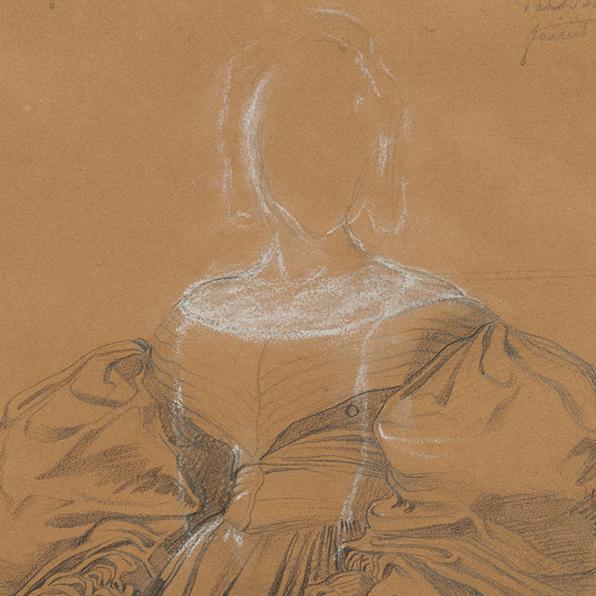
René-Auguste Flandrin (French, 1804–1843), Study for Woman in Green (detail), c. 1835. Black chalk, heightened with white chalk, on paper, 12 × 9 3/8 in. Clark Art Institute, Gift of Herbert and Carol Diamond, 2018.11.9
Typically used in stick form, chalk occurs naturally in limited colors, namely white, reddish-brown, and black. White chalk is mined from various types of fine-grained limestone (calcium carbonate). Red or sanguine chalk derives from clay containing iron ochre, which gives it a reddish-brown color. Black chalk is made from soft carbonaceous stone. By the nineteenth century, fabricated chalk, composed of dry natural pigments and a non-greasy, water-soluble binder such as glue or gum arabic (a hardened sap derived from the acacia tree) increasingly served as a suitable substitute for natural chalk. Both forms of the medium produce compact lines that are less easily reworked than charcoal lines.
CHARCOAL
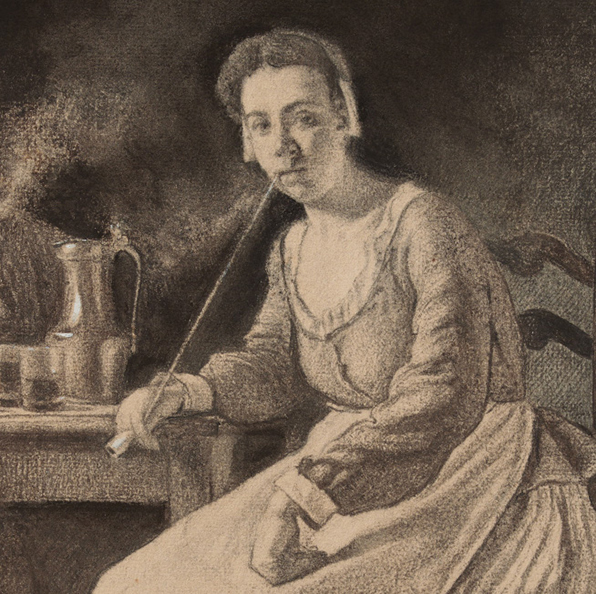
François Bonvin (French, 1817–1887), Interior of a Tavern (detail), 1866. Charcoal on paper, 15 3/4 × 11 3/4 in. Clark Art Institute, Gift of Herbert and Carol Diamond, 2018.11.2
Charcoal, a black pigmented, porous carbonaceous material, is made from charred wood—usually twigs from willow, maple, or beech—or organic materials such as vines, other plant material, or bone. When applied to paper, charcoal is easily blended, smudged, or lifted unless treated with a transparent, liquid fixative composed of gum arabic or resin, which stabilizes the pigment on the sheet. Compared to graphite, charcoal appears warmer in tone, with shades ranging from black-brown to a dense black depending on the natural material used to make it. Charcoal may be finely ground, compressed into sticks and fired to yield a crayon-like form that produces crisper, and generally darker, lines than natural pieces of charcoal (i.e., “vine charcoal”).
Conté Crayon
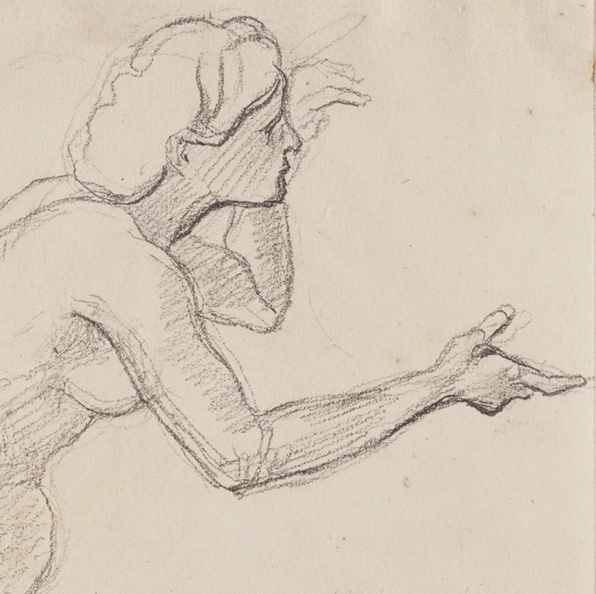
Henri Lehmann (French, 1814–1882), Study of Anna for The Arrival of Sarah at the Home of Young Tobias (detail), c. 1863. Conté crayon on paper, 11 9/16 x 8 7/8 in. Clark Art Institute, Gift of Herbert and Carol Diamond, 2018.11.10
Invented by Nicolas-Jacques Conté (1755–1805), this drawing crayon creates smooth, dense lines. Conté crayons are fabricated from a compressed mixture of powdered graphite and black-pigmented chalk or white, sepia, or sanguine clays. Conté crayons vary in hardness, depending on the amount of waxy or greasy binder used in their manufacture, and are less friable or easily crumbled than charcoal and chalk.
Graphite
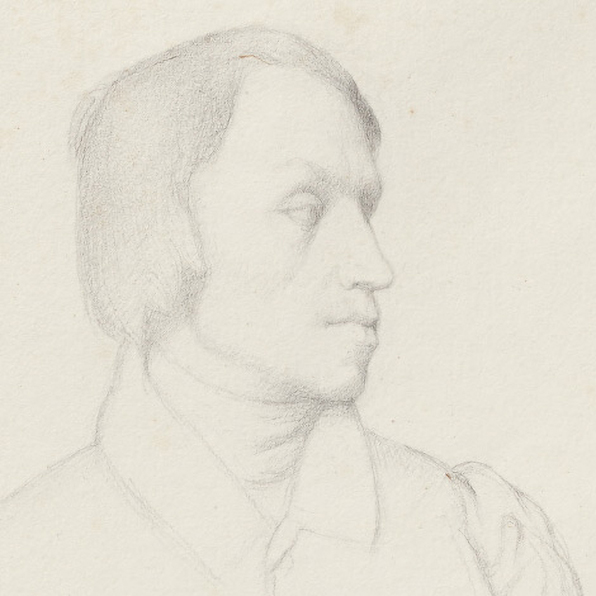
Hippolyte Flandrin (French, 1809–1864) and Paul Flandrin (French, 1811–1902), Self-Portrait of Hippolyte (detail), 1833. Graphite on paper, 10 1/4 × 7 1/2 in. Clark Art Institute, Gift of Herbert and Carol Diamond, 2018.11.6
Ranging from dark gray to black in color, natural graphite is a soft, lustrous form of carbon. Shaped into sticks or encased in a wood or metal cylindrical holder to form a pencil, graphite is versatile, producing fine, crisp lines when sharpened to a point or soft shading when dragged on its side across the paper surface. By the early nineteenth century, a substitute for natural graphite—rods fashioned from mixtures of powdered graphite and clay—became a prototype for the modern pencil. Such pencil “leads” vary in hardness and darkness: those containing mostly clay are harder and leave less graphite on the paper’s surface, yielding lighter lines.
Ink
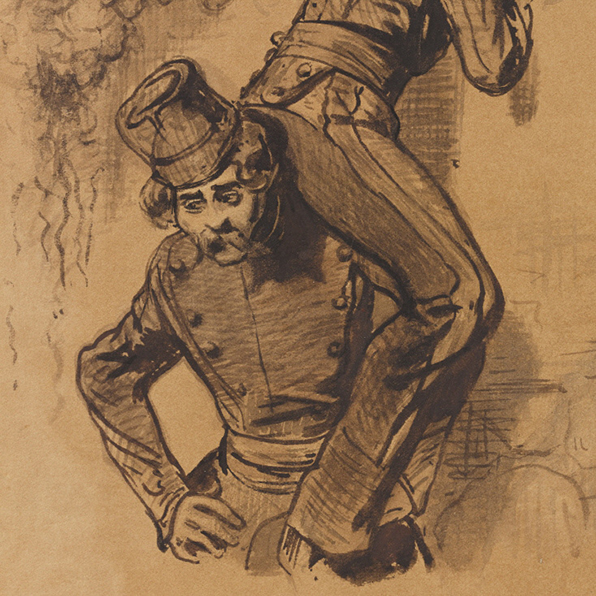
Paul Gavarni (French, 1804–1866), Psst...! (Psit…!) (detail), c. 1839. Brown ink and wash on paper, 9 3/8 × 7 in. Clark Art Institute, Gift of Herbert and Carol Diamond, 2017.10.10
Historically, ink for drawing was composed only of fine black and brown pigments or dyes dispersed in water and gum arabic or animal glue. Typical sources of these dark, opaque pigments included carbon (particles of charred wood or lamp oil), iron gall (tannin extracted from oak tree gall nuts), bistre (soot of burned wood), and sepia (secretion extracted from cuttlefish). In the nineteenth century, artists would grind dried sticks or blocks of pigment and mix the particles with an aqueous solution. Over the centuries, artists have applied ink to paper with various types of brushes and pens, including quill pens, reed pens, and by the mid-nineteenth century, those using sharp, interchangeable steel nibs.
Pastel
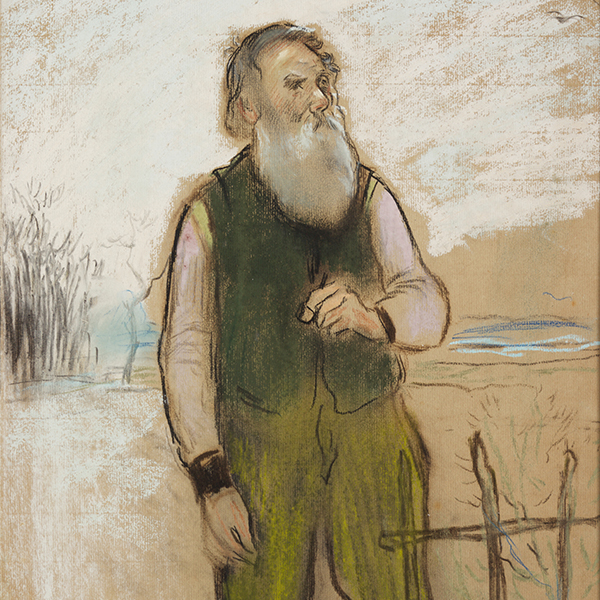
Jean-François Raffaëlli (French, 1850–1924), Man in the City’s Outskirts (Bonhomme de Banlieue) (detail), c. 1885. Black chalk and pastel on paper, 24 1/2 x 14 1/2 in. Clark Art Institute, Collection of Herbert and Carol Diamond
Pastel is a fabricated form of chalk made from finely ground color pigments, a neutral filler such as natural white chalk, kaolin, or gypsum, and a small amount of binder (gum tragacanth); these materials are combined into a paste and rolled into sticks. Producing line and color at once, pastel is available in an array of hues and shades. Soft and powdery, pastel is easily blended, stumped, and smudged to convey a diversity of textures and luminous color effects.
